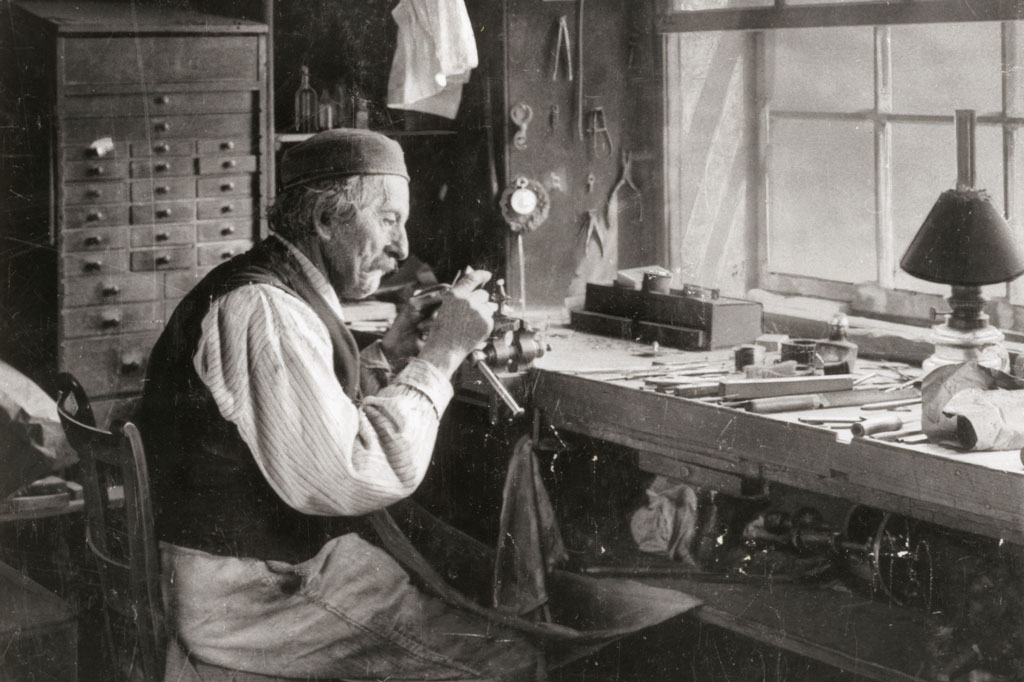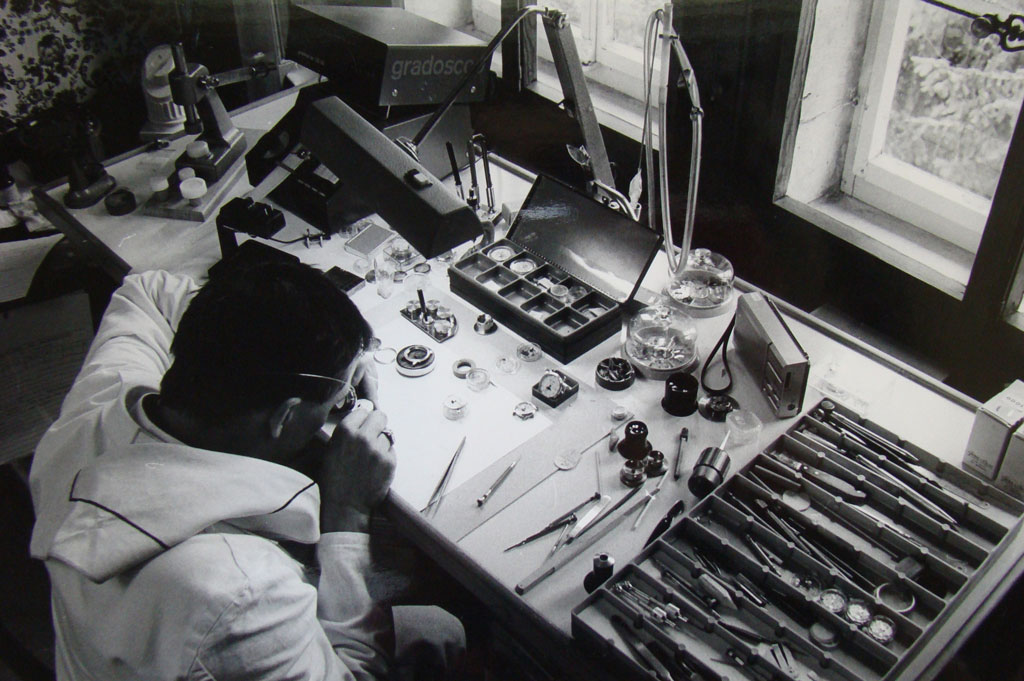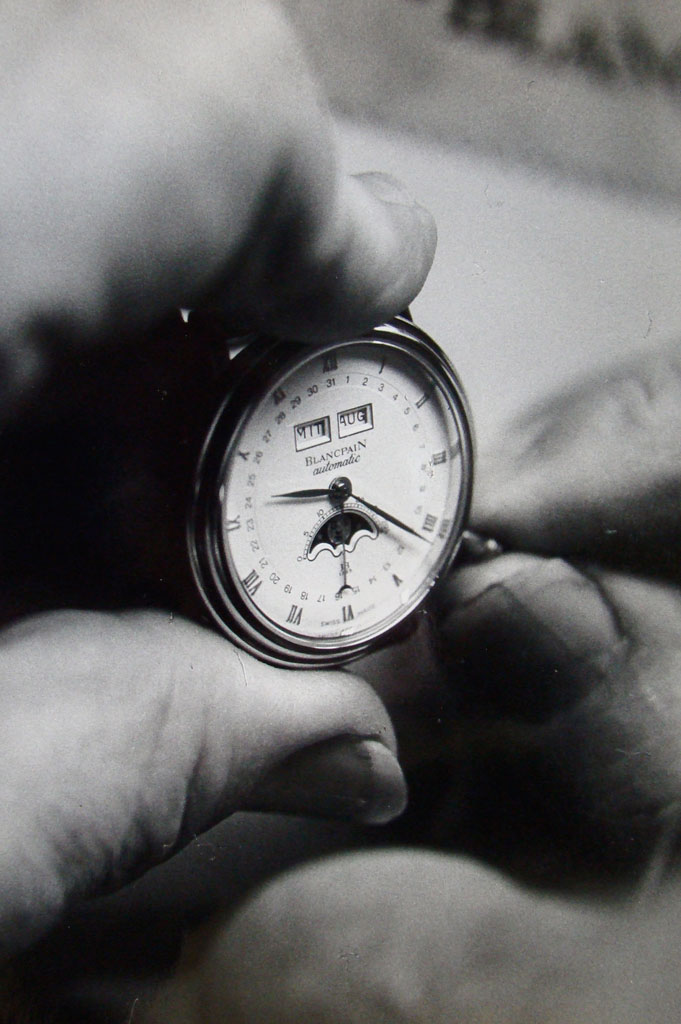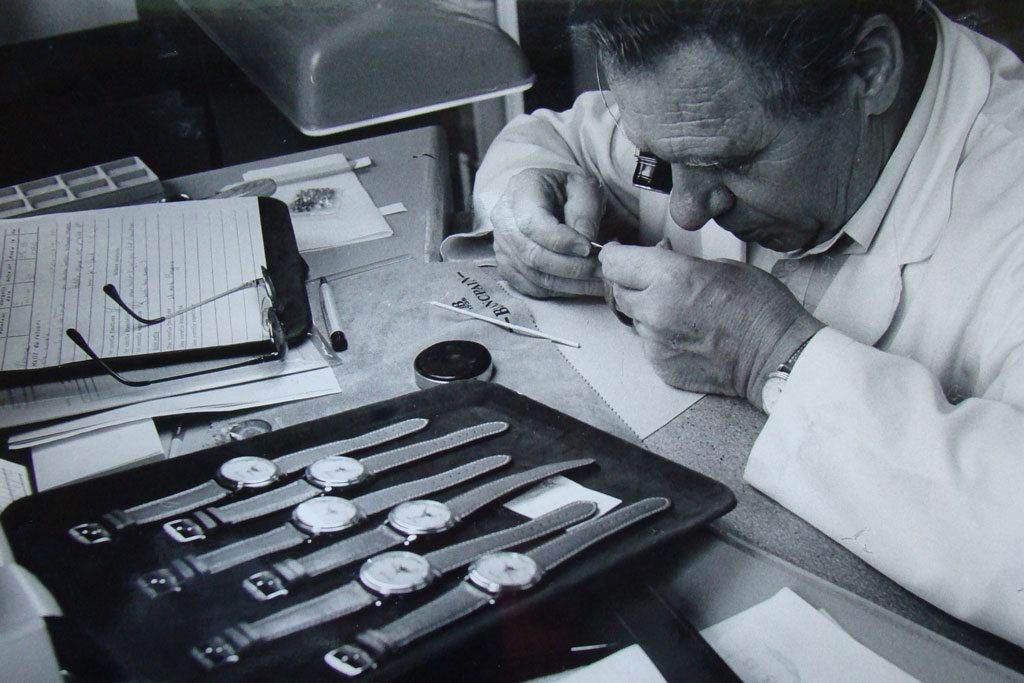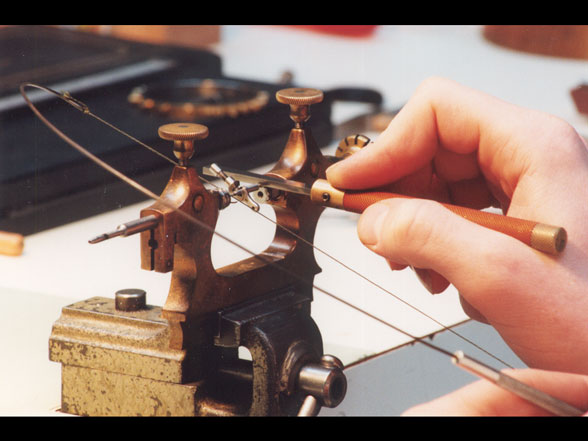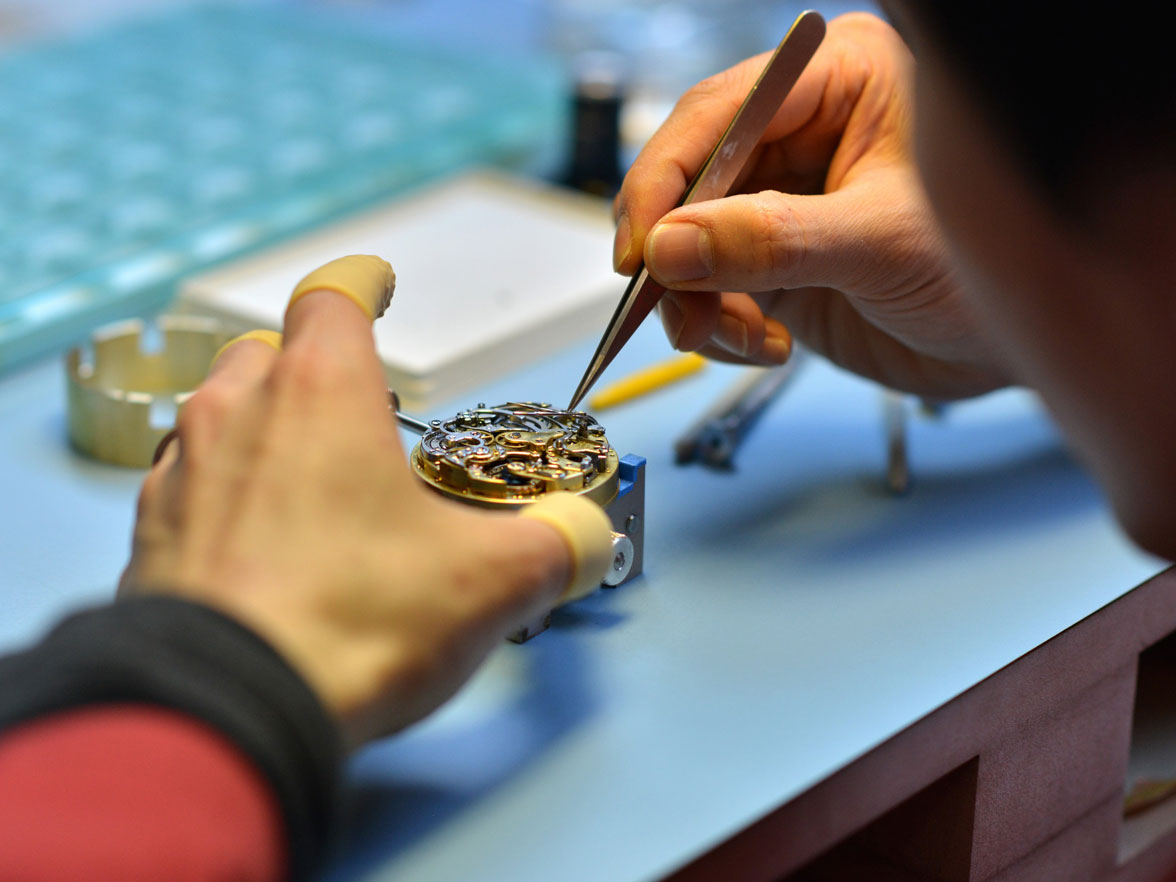*Inscribed on the Representative List of the Intangible Cultural Heritage of the UNESCO
It is a well-known fact that watchmaking played a major role in shaping artisanship, industry and society throughout the Jura region. In the 18th century, the industry began to move away from Geneva, widely held to be the birthplace of watchmaking, towards sparsely populated regions like the Vallée de Joux and the Neuchâtel Jura. Following pressure from American makers, the traditional etablissage system deployed in Switzerland was progressively supplanted by standardised workshops. It was during this time that the first watchmaking colleges were founded. Two successive crises in the 20th century would transform the Swiss watchmaking industry. The first was the forcible introduction of a watchmaking cartel supported by banks and bolstered by the law (the “Statut Horloger”); the second was the formation of major watchmaking concerns. The development of the watchmaking industry in the Jura valleys, however, followed its own path, since that region continues producing watches in a fragmented way, and even in small workshops, besides the widespread development of the American model in most manufacturing areas of Switzerland. These numerous manual crafts and skills with high added value are still essential to the making of luxury watches on which Switzerland built its worldwide reputation. It is undoubtly this precision, attention to detail and outstanding know-how that nowadays offer marketing executives a golden opportunity to promote Swiss watches as the embodiment of luxury, excellence and quality.
Detailed description
Savoir-faire horloger (PDF, 486 kB, 05.06.2018)description détaillée
Category
Canton
Video
Publications
Catherine Cardinal (Ed.) : L’homme et le temps en Suisse, 1291-1991. La Chaux-de-Fonds, 1991
Pierre-Yves Donzé : Histoire de l’industrie horlogère suisse, de Jacques David à Nicolas Hayek (1850-2000). Neuchâtel, 2009
Estelle Fallet, Alain Cortat : Apprendre l’horlogerie dans les montagnes neuchâteloises, 1740-1810. La Chaux-de-Fonds, 2001
Estelle Fallet, Antoine Simonin (Ed.) : Dix écoles d’horlogerie suisses. Chefs-d’œuvre de savoir-faire. Neuchâtel, 2010
Patrick Linder : Au cœur d’une vocation industrielle. Les mouvements de montre de la maison Longines (1832-2007). Tradition, savoir-faire, innovation. Saint-Imier, 2007
Laurence Marti : La Grande Famille, pratiques, représentations et identités horlogères dans le Jura suisse. Thèse de doctorat en anthropologie et sociologie, Université Lumière Lyon, 1996
Laurence Marti : Invention de l’horloger. De l’histoire au mythe de Daniel JeanRichard. Lausanne, 2003
Michel Vermont (Ed.) : Théorie de la construction horlogère pour ingénieurs. Le Locle, 2006
Michael Leuenberger : « L'industrie horlogère suisse - mythes et réalités ». In : Art et Architecture en Suisse, No. 2, 2010, p 38-42
Laurence Marti : Le renouveau horloger - contribution à une histoire récente de l'horlogerie suisse (1980-2015). Neuchâtel, 2017
Hervé Munz : La transmission en jeu - Apprendre, pratiquer, patrimonialiser l'horlogerie en Suisse. Neuchâtel, 2016
Peter Scheck: Die Uhrmacher Habrecht von Schaffhausen. In: Schaffhauser Magazin, 4/1989, p. 27-31
Georg von Holtey und Peter Widmer: Uhren Deutschschweizer Meister. Katalog zur Sonderausstellung im Museum für Musikautomaten Seewen SO. Seewen, 2007
Links
Multimedia on-line
Keywords
Contact
Kanton Basel-Landschaft
Amt für Kultur
Amt für Kultur des Kantons Bern
République et canton de Genève
Service cantonal de la culture
République et canton du Jura
Office de la culture
Kanton Schaffhausen
Fachstelle für Kulturfragen
Kanton Solothurn
Amt für Kultur und Sport
Service des affaires culturelles de l'Etat de Vaud
République et Canton de Neuchâtel
Service de la Culture


